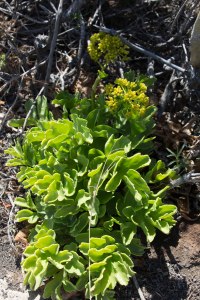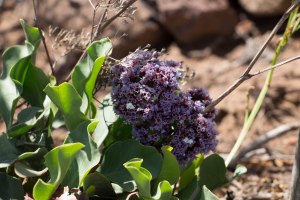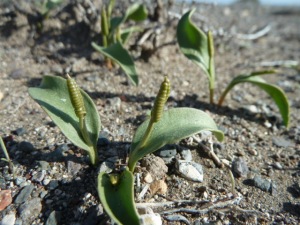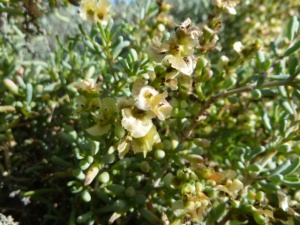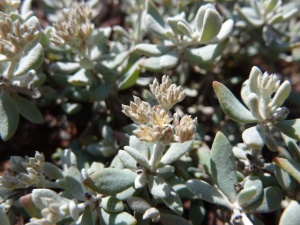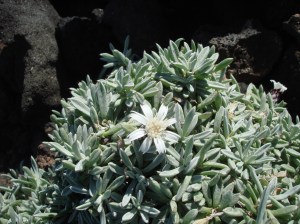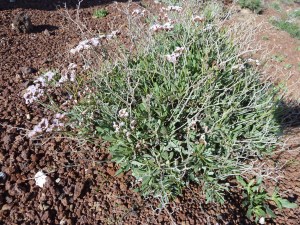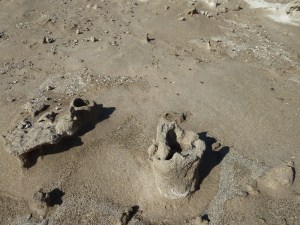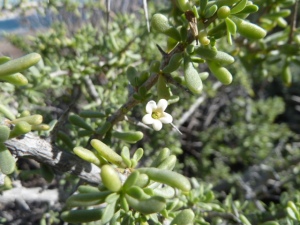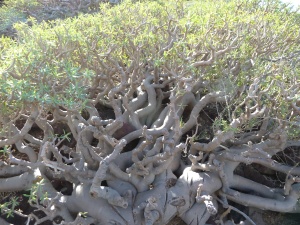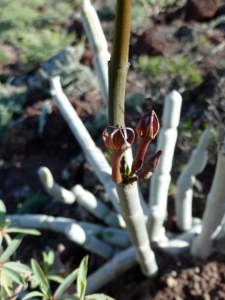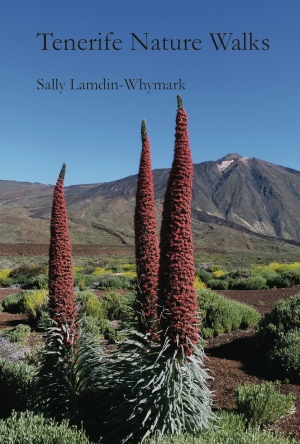Blog Archives
Punta de Teno botanical walk in May
The area around the Punta de Teno, also known as Teno Bajo, is a very special place botanically. It is also a bit difficult to get to as there are high cliffs on the north coast which blocked access to the low-lying land beyond, until tunnels were cut through the cliff. In July 2016 8 metres of the road in front of the cliffs collapsed suddenly into the sea, leaving 174 people, and their vehicles, trapped in Teno Bajo. The people were evacuated by helicopter, I’m not sure what happened to their cars! In January 2017 the repaired road was re-opened but with new rules. So now at weekends and holidays it is compulsory to take a bus to and from Teno Bajo. The buses run hourly from Buenavista del Norte and it costs just 1 Euro each way.
The advantage of a bus ride is that I can look out of the windows to see the plants on and at the base of the cliffs as we are driven past, and among those in flower in May when we went there was a rare knapweed relative endemic to Tenerife called in spanish Cabezón de El Fraile (the name of the cliff). Its latin name is Cheirolophus buchardii. The bus passed lots of them on the cliffs, but unfortunately I was unable to get a picture. On the cliffs also are dense clumps of the leafless spurge (Euphorbia aphylla), but again I’m sorry no picture.
We stayed on the bus right down to the beach near the lighthouse at the end of the road. We could have got off at an earlier bus stop if we had pressed the bell, but otherwise the bus does not stop. So we set off walking back towards the tunnel, wandering on the open scrubby coastal plain. There were plenty of flowers to be seen, some fairly common coastal species, such as the Cornical (Periploca laevigata), and Canary spurge (Euphorbia canariensis), and others less common such Dama (Parolinia intermedia) which is a Tenerife endemic which grows in abundance in relatively few areas.
There was a lot of Sea Lettuce (Astydamia latifolia) in a wide area, but the flowers of most were over, I just found one in flower under a Duraznillo (Cebollosia fruticosa).
Of the everlasting flowers (Limonium spp.), the pectinatum was absolutely in the right place, but the imbricatum was right next to the road, nearing the area of most human alteration, where the tomato growing area is. I rather think the imbricatum may have been planted.
As we passed the tomato plantation area, the coastal plain gradually disappears and the cliffs get closer to the coast. The slopes are covered with different plants from the plain, and hanging from the cliffs is the rare Tenerife endemic Tenerife Samphire (Vieraea laevigata) with its yellow daisy flowers.
We found we were at a bus stop, and decided we would return to Buenavista, so we hailed the bus. It had only been a brief visit and only a short stroll but had been a delight and I must make another visit next year in April or May to get a closer look, and better photos, of other exciting plants.





